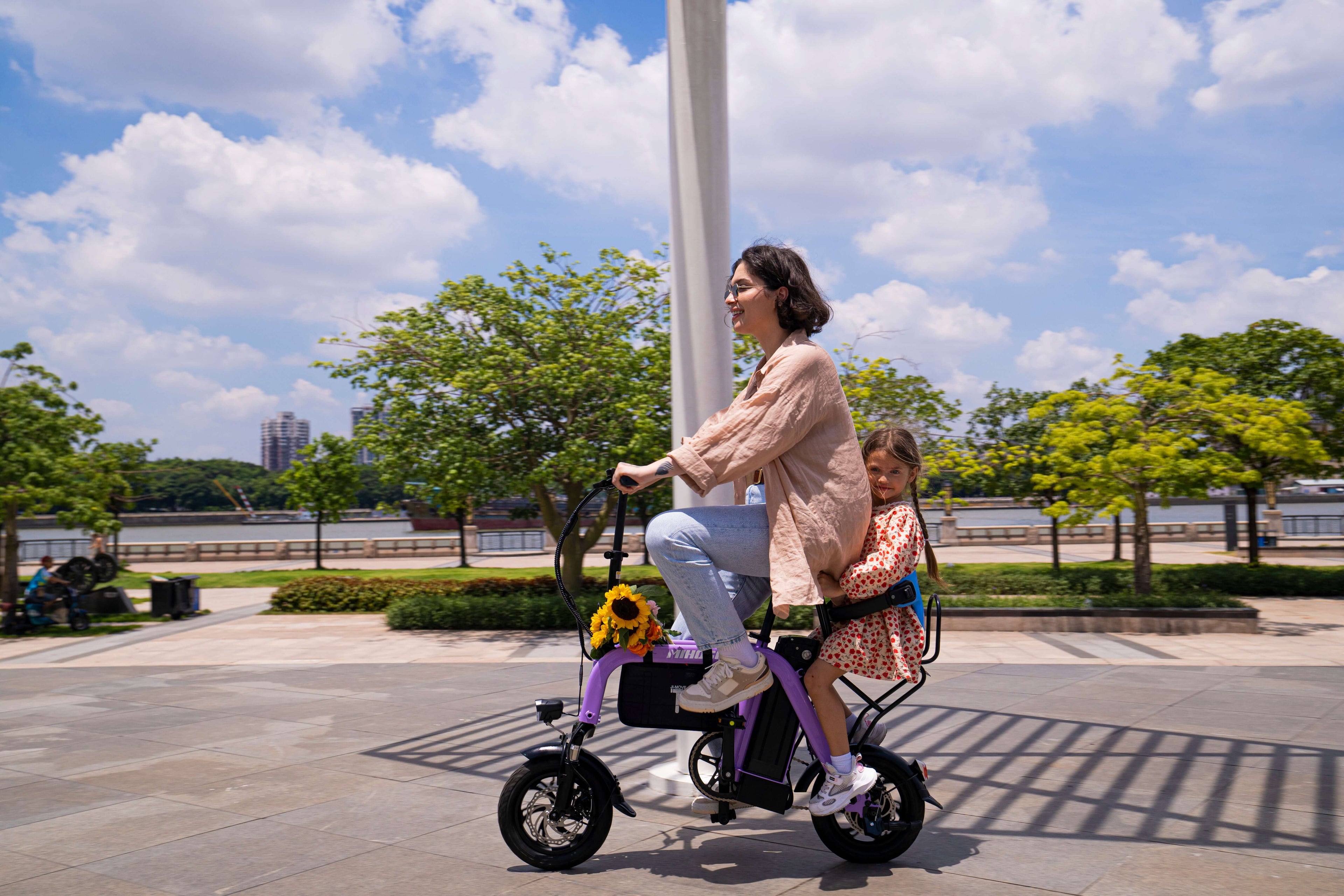Why E-Bike Safety Matters More Than Ever
Electric bikes present unique safety considerations compared to traditional bicycles. Modern e-bikes are becoming rolling computers with features like AI sensors, smart helmets that detect accidents and automatically send notifications to emergency contacts. However, these technological advances require riders to be more aware of potential risks.
The Growing Safety Challenge
Recent data reveals concerning trends:
- The rate of e-bike injuries surged by 293 percent between 2019 and 2022
- 78.3% of e-bike users feel safe riding their electric bicycles on public roads, compared to 63.7% who feel safe riding pedal cycles
- Between 2018 and 2022, sales of e-bikes rose from around 250,000 per year to more than a million
These statistics underscore the importance of comprehensive safety practices for electric bike riders.
Essential Helmet Safety for E-Bike Riders
Understanding E-Bike Specific Helmet Requirements
Not all helmets provide adequate protection for electric bike riders. Traditional bike helmets just don't offer sufficient protection for e-bike riders due to the higher speeds and increased risks involved.
Key helmet certifications to look for:
- NTA 8776 Certification: Since its inception in 2015, this safety standard has become the gold standard for e-bike protective gear
- Virginia Tech 5-Star Rating: Look for helmets that have earned the highest safety ratings
- MIPS Technology: Multi-Directional Impact Protection System reduces rotational forces during impact
Helmet Selection Guidelines
When choosing your e-bike helmet, consider these factors:
- Speed-appropriate protection: Each certification ensures that the helmet can absorb the significantly higher impact energy of a crash at higher speeds
- Extended coverage: E-bike helmets should cover more of your head than traditional bike helmets
- Integrated safety features: Look for helmets with built-in lights and visibility enhancements
For comprehensive helmet safety information, visit the National Highway Traffic Safety Administration website.
Critical Battery Safety Guidelines
Understanding Lithium-Ion Battery Risks
Battery fires represent one of the most serious safety concerns for e-bike owners. Nationwide, there have been 188 explosions and more than 3,000 fires caused by lithium-ion battery-powered consumer devices since 2022.
Fire Prevention Best Practices
Charging Safety:
- Do not leave an electric bike unattended while it's charging, and don't leave it charging overnight
- Always use the manufacturer's original charger
- Charge on hard, stable surfaces away from flammable materials
- Never charge near exits or escape routes
Storage Guidelines:
- Store your e-bike in a cool, dry place away from exits, stairs, and flammable materials
- Keep batteries in temperature-controlled environments
- Inspect batteries regularly for damage, swelling, or unusual odors
Purchase Recommendations:
- Buy an electric bike that is certified by a qualified testing organization such as Underwriters Laboratory
- Avoid uncertified aftermarket batteries
- Choose reputable manufacturers with proper safety certifications
Learn more about battery safety standards from the Consumer Product Safety Commission.
Road Safety and Riding Techniques
Speed Management and Control
Electric bikes can reach speeds that casual riders rarely achieve on conventional bicycles. Some e-bikes approach speeds of 30 miles per hour. The faster you go, the less time you have to react to unexpected potholes or veering vehicles.
Speed safety tips:
- Start slow and gradually increase speed as you gain experience
- Practice in safe, traffic-free areas before riding in busy streets
- Understand your local speed limits and regulations
- Adjust speed based on weather and road conditions
Visibility and Defensive Riding
Enhance your visibility:
- Wear bright, reflective clothing
- Use front and rear lights even during daylight hours
- Consider helmets with integrated lighting systems
- Install additional visibility accessories on your bike
Practice defensive riding:
- Watch out for potholes or opening car doors
- Maintain safe following distances
- Signal your intentions clearly to other road users
- Stay alert and avoid distractions like phone use
Traffic Integration Strategies
Call out. Announce your presence to others. For example, shout "on your left!" as you approach pedestrians or slower riders that you intend to pass.
Additional traffic safety measures:
- Follow all traffic laws applicable to bicycles
- Use bike lanes when available
- Be extra cautious at intersections
- Avoid riding on sidewalks where prohibited
Pre-Ride Safety Checks
Essential Equipment Inspection
Before every ride, perform these safety checks:
Mechanical Systems:
- Test brakes for proper function
- Check tire pressure and tread condition
- Ensure all bolts and connections are secure
- Verify proper chain tension and lubrication
Electrical Components:
- Check battery charge level
- Test motor engagement
- Verify display and control functions
- Inspect all electrical connections
Safety Equipment:
- Confirm helmet fit and condition
- Test lights and reflectors
- Check that safety gear is secure
Weather Considerations
Weather conditions significantly impact e-bike safety:
- Rain: Reduce speed and increase following distance
- Wind: Be prepared for sudden gusts that can affect balance
- Cold: Battery performance may be reduced
- Heat: Monitor for battery overheating during charging
Legal Requirements and Regulations
Understanding E-Bike Classifications
Ebikes come in three main types called Class 1, Class 2, and Class 3. Different classes have different rules about helmets.
Class-specific safety requirements:
- Class 1: Pedal-assist only, 20 mph max
- Class 2: Throttle-assisted, 20 mph max
- Class 3: Pedal-assist, 28 mph max (often requires helmets for all riders)
Age-Related Safety Guidelines
The U.S. Consumer Product Safety Commission (CPSC) recommends that children under age 12 should not operate any e-bike that travels more than 10 mph. Parents should carefully consider their child's maturity and skill level before allowing e-bike use.
For current local regulations, check your state's Department of Motor Vehicles website or local transportation authority.
Emergency Preparedness and Response
Accident Response Protocol
In case of an accident:
- Move to safety if possible
- Assess injuries and call emergency services if needed
- Document the scene with photos
- Exchange information with involved parties
- Contact your insurance provider
Emergency Kit Essentials
Always carry:
- First aid supplies
- Emergency contact information
- Basic tools for minor repairs
- Phone charger or power bank
- Identification and insurance information
Advanced Safety Features and Technology
Smart Safety Innovations
Modern e-bikes incorporate advanced safety features:
- Smart sensors and GPS; mobile apps track everything from performance to navigation to safety
- Automatic emergency braking systems
- Integrated turn signals and brake lights
- GPS tracking for theft recovery
Future Safety Developments
The e-bike industry continues innovating safety technology:
- Collision detection systems
- Enhanced battery management systems
- Improved lighting and visibility solutions
- Advanced rider assistance features
Maintenance for Safety
Regular Safety Maintenance Schedule
Weekly checks:
- Tire condition and pressure
- Brake function
- Battery charge and connections
- Light operation
Monthly inspections:
- Chain lubrication
- Bolt tightness
- Electrical system inspection
- Detailed cleaning and inspection
Annual professional service:
- Comprehensive safety inspection
- Battery health assessment
- Motor and drive system service
- Brake system overhaul
Visit our complete e-bike maintenance guide for detailed maintenance instructions.
Conclusion: Making Safety Your Priority
E-bike safety requires a comprehensive approach combining proper equipment, safe riding practices, and ongoing maintenance. According to the U.S. National Safety Council, helmets are estimated to reduce head and brain injury risk by 85–88%.
As the e-bike community continues to grow, prioritizing safety benefits everyone. By following these guidelines, you can enjoy the freedom and efficiency of electric biking while minimizing risks to yourself and others.
Remember: the best safety equipment is the gear you actually use consistently. Invest in quality safety equipment, stay informed about best practices, and ride responsibly.
For additional safety resources, check out the Bicycle Helmet Safety Institute and stay updated on the latest safety recommendations.








